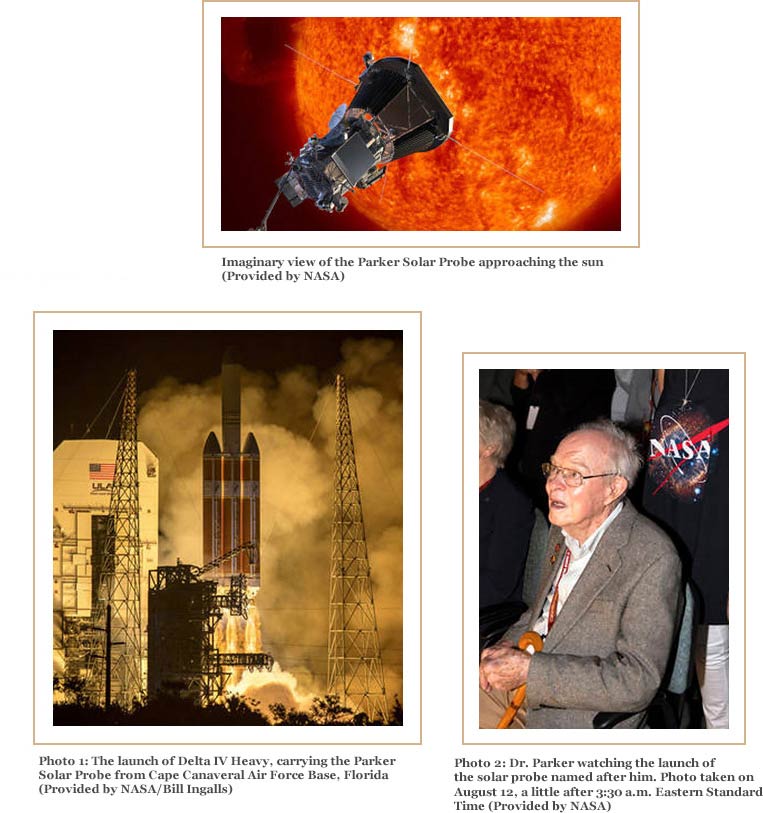News
Approaching the Sun and the Mysteries of Corona Updated in October 2018
Parker Solar Probe was launched via the large rocket Delta IV Heavy on August 12 from Cape Canaveral Air Force Base in Florida. The NASA solar probe protected by special insulation will directly examine the ultra-high temperature corona, which is surrounding the outer circumference of the sun. In comparison to probes from the past, Parker Solar Probe will try to approach the sun up close, to verify the mysterious solar corona. The probe is scheduled to transmit its first batch of observation data in December, while traveling towards the sun.
According to NASA, the Parker Solar Probe shall utilize the gravitation from Venus and shall orbit the sun for 24 times in 7 years and will try to approach the sun little by little. The closest the probe can get is 6.1 million kilometers from the surface of the sun. Because the probe will be subject to extreme heat of about 1,400 degrees, its body is protected with a special carbon-made insulation measuring 11 centimeters thick.
The heat of the solar corona is believed to be more than 1 million degrees. The probe shall enter the corona but the plasma particles that make up the corona have a low density. Because the probe shall move at an ultra-high speed of 700 thousand kilometers per hour, only some particles will cross paths with the probe’s body. Therefore, the heat energy transmitted to the probe’s body is limited and the surface temperature of the body may be about 1,400 degrees.
The sun is a very familiar celestial body, influencing the earth and mankind. However, up to now, there have been many mysteries like why the corona is as hot as 1 million degrees while the sun’s surface is merely 6,000 degrees.
In cooperation with West Germany, NASA launched solar probes Helios I and Helios II during the 1970s. According to JAXA’s Space Information Center, the closest distance between Helios and the sun was 45 million kilometers. The Parker Solar Probe is the first full-scale probe of its kind in this century. It incorporates state-of-the-art technology and will approach the surface of the sun from a distance of 6.1 million kilometers. In terms of spatial scale, that is extremely close. The probe shall collect data to resolve mechanisms of the corona’s ultra-high temperature and the acceleration of solar winds.
The Parker Solar Probe was named after the American space physicist Dr. Eugene Parker. According to NASA and other sources Dr. Parker was born in 1927, and is a leading figure in the research of the sun. He made significant contributions to the field in the 1950s by proposing basic concepts like solar wind. He also taught many researchers at the University of Utah and the University of Chicago. He received the Kyoto Prize in 2003. He also watched the probe’s launch on August 12.








